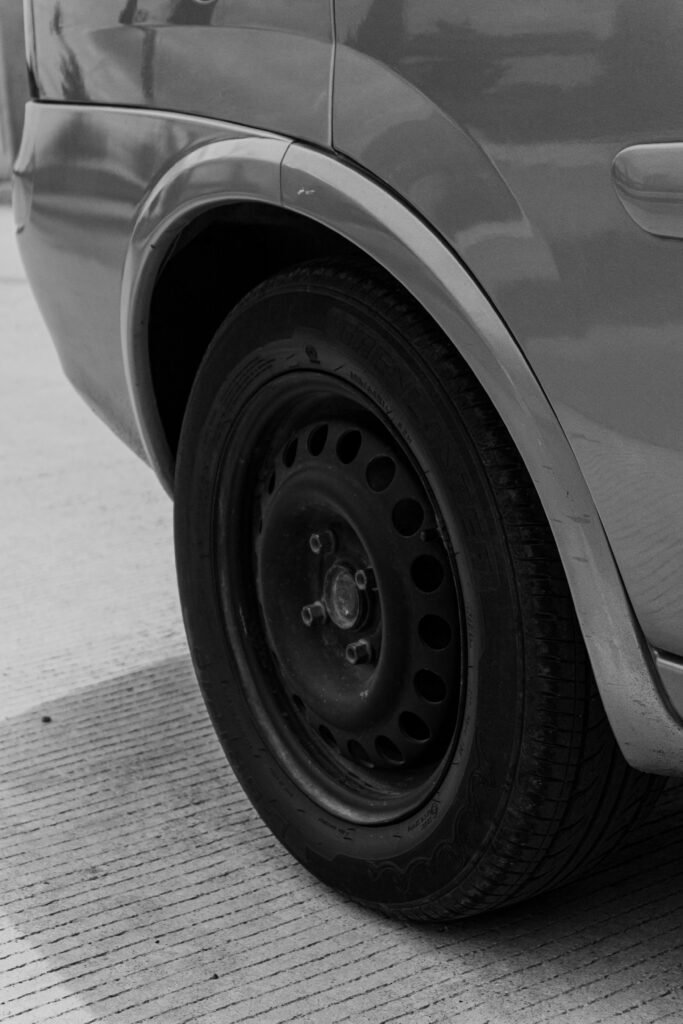Whether you’re a car enthusiast or simply want to improve the lifespan and performance of your vehicle, understanding how to preserve your tires is essential. In this article, you will discover ten tire preservation techniques that will not only help you save money on frequent replacements but also ensure a smoother and safer ride. From regular tire rotations to maintaining proper inflation, these techniques are easy to implement and will keep your tires in top shape for years to come. So, buckle up and get ready to learn the secrets of tire preservation!

This image is property of images.pexels.com.
Proper Tire Inflation
Regularly check tire pressure
To ensure the longevity and performance of your tires, it is crucial to regularly check the tire pressure. Tire pressure can fluctuate due to various factors such as temperature changes and normal wear and tear. By checking the tire pressure regularly, you can catch any deviations from the recommended pressure and address them promptly.
Maintain the recommended tire pressure
Maintaining the recommended tire pressure is essential for several reasons. Firstly, underinflated tires can lead to decreased fuel efficiency and increased tire wear. Overinflated tires, on the other hand, can result in a harsher ride and reduced traction. By keeping your tires properly inflated, you can optimize their performance and ensure a safe and comfortable driving experience.
Consider using a digital tire pressure gauge
While traditional tire pressure gauges can be effective, consider using a digital tire pressure gauge for more accurate readings. Digital gauges provide precise measurements, allowing you to maintain the recommended pressure more effectively. They are also user-friendly and often come with additional features such as LED displays and automatic shut-off.
Tire Rotation
Rotate tires regularly
Rotating your tires at regular intervals is integral to their overall preservation. Tire rotation involves swapping the front and rear tires to ensure even wear. This helps extend the lifespan of your tires and promotes better traction and handling. It is generally recommended to rotate your tires every 5,000 to 8,000 miles or as specified in your vehicle’s manual.
Follow the appropriate rotation pattern
Different vehicles require different rotation patterns, so it is essential to follow the appropriate pattern for your specific vehicle. The most common rotation patterns are the forward cross, rearward cross, and X-pattern. These patterns ensure that all the tires wear evenly and distribute the load more effectively, ultimately increasing the longevity of your tires.
Consult your vehicle’s manual for recommendations
To ensure the correct rotation pattern and interval for your vehicle, always refer to your vehicle’s manual. Manufacturers provide specific guidelines tailored to your vehicle’s make and model. Following these recommendations will help preserve your tires and prevent any potential damage that may arise from improper rotation techniques.
Balancing Tires
Have tires balanced during rotation
When you rotate your tires, it is also advisable to have them balanced. Tire balancing involves equalizing the weight distribution on the wheels and tires, ensuring smooth and even rotation. This process eliminates vibrations that may occur due to imbalanced tires and enhances your driving experience.
Use a dynamic wheel balancer
When having your tires balanced, make sure to use a dynamic wheel balancer. Dynamic wheel balancers accurately identify any imbalances and recommend the precise amount of weight needed to balance the tire. This ensures that each tire is properly balanced, reducing vibrations, improving tire wear, and enhancing the overall performance of your vehicle.
Check for vibrations or uneven tire wear
In between tire rotations and balancing sessions, it is important to periodically check for any vibrations or uneven tire wear. Vibrations can indicate an imbalance or other issues that need to be addressed promptly. Similarly, uneven tire wear can be a sign of misalignment or other underlying problems. By regularly inspecting your tires, you can catch these issues early and take appropriate measures to preserve your tires.
Alignment
Get regular wheel alignment
Proper wheel alignment is crucial for tire preservation and overall vehicle performance. Wheel alignment refers to adjusting the angles of the wheels to the manufacturer’s specifications. Over time, the alignment can become skewed due to factors such as hitting curbs, potholes, or general wear and tear. Getting regular wheel alignments ensures that your tires wear evenly and reduces the risk of premature tire damage.
Check for signs of misalignment
In addition to regular alignments, it is essential to be vigilant for signs of misalignment. These signs include uneven tire wear, a pulling sensation while driving, or the steering wheel not being centered when driving straight. If you notice any of these signs, it is advisable to have your alignment checked and adjusted as necessary. Ignoring misalignment can result in accelerated tire wear and potentially compromise your safety on the road.
Adjust alignment after hitting curbs or potholes
Hitting curbs or potholes can quickly throw off your wheel alignment. Even seemingly minor impacts can cause misalignment, leading to uneven tire wear and poor handling. Whenever you encounter such incidents, it is wise to have your alignment checked immediately. Addressing misalignment promptly can prevent further tire damage and ensure optimal tire preservation.

This image is property of images.pexels.com.
Proper Storage
Store tires in cool and dry conditions
If you are storing your tires, it is crucial to do so in cool and dry conditions. Extreme heat or cold can negatively affect the integrity of the rubber and lead to premature tire aging or degradation. To preserve your tires, find a suitable storage location that offers stable temperatures and protects them from direct sunlight, moisture, and other environmental factors.
Clean and dry tires before storage
Before storing your tires, it is important to clean and dry them thoroughly. Dirt, debris, and moisture can contribute to the degradation of the rubber over time. Use a mild soap solution and a soft brush to remove any dirt or grime from the tires. Once cleaned, ensure they are completely dry before storing them. This will help maintain the quality of the rubber and prevent any potential damage during storage.
Avoid storing near chemicals or ozone-producing equipment
When storing your tires, it is essential to keep them away from chemicals or equipment that produce ozone. Ozone can accelerate rubber deterioration and compromise the structural integrity of the tires. Avoid storing your tires near areas with strong chemical odors, such as gasoline, solvents, or cleaning agents. Additionally, keep them away from electric motors or other equipment that emit ozone.
Tire Cleaning
Regularly clean tires to remove dirt and debris
Regularly cleaning your tires is an important aspect of tire preservation. Dirt, debris, and road grime can build up on the tire surface, leading to potential damage over time. Cleaning your tires removes these contaminants and helps prevent degradation of the rubber. Make it a habit to wash your tires as part of your regular car cleaning routine.
Use a mild soap solution and soft brush
When cleaning your tires, opt for a mild soap solution and a soft brush. Harsh chemicals or abrasive tools can cause damage to the rubber, compromising the tire’s integrity. Gently scrub the tires with the soap solution, paying attention to the sidewalls and tread. Rinse thoroughly with water to ensure all soap residue is removed.
Avoid using harsh chemicals or abrasive tools
As mentioned earlier, it is crucial to avoid using harsh chemicals or abrasive tools when cleaning your tires. These can cause irreversible damage to the rubber, leading to decreased tire performance and lifespan. Stick to mild soap solutions and soft brushes to ensure effective cleaning without causing harm to the tires.

This image is property of images.pexels.com.
Avoid Overloading
Check load capacity for your tires
Each tire has a specific load capacity, indicated by the manufacturer. It is important to be aware of this capacity and ensure that you do not exceed it. Overloading your tires can lead to increased heat buildup, accelerated wear, and potential tire failure. Refer to your vehicle’s manual or the tire manufacturer’s guidelines to determine the appropriate load capacity for your tires.
Avoid exceeding the maximum weight limit
To preserve your tires, it is critical not to exceed the maximum weight limit specified by the tire manufacturer. Exceeding this limit places excessive strain on the tires, increasing the risk of premature tire failure and compromising your safety on the road. Distribute the weight evenly in your vehicle and avoid overloading it beyond the recommended capacity.
Distribute weight evenly in the vehicle
Proper weight distribution within your vehicle is essential for tire preservation and overall performance. Uneven weight distribution can result in imbalances and increased tire wear. When packing your vehicle, ensure that heavier items are evenly distributed and properly secured. This promotes better tire wear and handling, contributing to the longevity of your tires.
Proper Driving Habits
Avoid aggressive acceleration and braking
Your driving habits have a direct impact on tire preservation. Aggressive acceleration and braking can cause excessive tire wear and decrease the lifespan of your tires. By adopting smoother driving habits, you can reduce the strain on your tires and promote even wear. Gradually accelerating and decelerating allows your tires to maintain better traction and reduces the risk of premature tire damage.
Take turns and corners smoothly
Taking turns and corners smoothly is another driving habit that can contribute to tire preservation. Sudden or harsh turns can place excessive stress on the tires, leading to uneven wear and decreased performance. When navigating curves or corners, maintain a controlled speed and steer smoothly to maintain traction and preserve your tires.
Avoid driving over potholes or rough surfaces
Potholes and rough surfaces can cause significant damage to your tires. Sharp impacts can result in punctures, sidewall damage, or misalignment. Whenever possible, avoid driving over potholes or uneven surfaces, and exercise caution on rough roads. By avoiding such hazards, you can prevent unnecessary tire damage and extend the life of your tires.
Tire Inspections
Regularly inspect tires for any damage or wear
Regular tire inspections are crucial for identifying any potential issues early on. Take the time to visually inspect your tires for signs of damage or wear. Look for bulges, cuts, cracks, or any other abnormalities that may impact the tire’s performance. Detecting these issues early can help prevent tire failure and ensure the safety of your vehicle.
Look for signs of bulges, cracks, or punctures
When inspecting your tires, pay specific attention to signs of bulges, cracks, or punctures. Bulges or bubbles can indicate internal damage to the tire’s structure, while cracks can suggest tire aging or damage. If you notice any punctures or nails embedded in the tire, it is essential to address them promptly to prevent further damage and potential tire failure.
Check tire tread depth using a tread depth gauge
Tire tread depth is a critical aspect of tire safety and preservation. Insufficient tread depth can reduce traction, increase stopping distance, and compromise handling. Use a tread depth gauge to measure the depth of the tire treads regularly. If the tread depth falls below the recommended level, it may be time to replace the tires to maintain optimal performance and safety.
Tire Maintenance Schedule
Follow a regular maintenance schedule
To ensure comprehensive tire preservation, it is crucial to follow a regular maintenance schedule. This schedule should include visual inspections, tire rotations, balancing, alignments, and other necessary checks. By adhering to a consistent maintenance routine, you can stay proactive in preserving your tires and catching any potential issues before they escalate.
Perform visual inspections monthly
As part of your tire maintenance schedule, perform visual inspections on a monthly basis. Check for damages, wear patterns, and any other abnormalities. Look for changes in tread depth, bulges, cracks, or foreign objects embedded in the tires. Identifying any issues early on allows for timely corrective actions and helps you maintain the performance and longevity of your tires.
Schedule professional tire check-ups annually
In addition to regular visual inspections, it is advisable to schedule professional tire check-ups annually. Tire experts can conduct comprehensive inspections, measure wear patterns, assess tire conditions, and provide recommendations tailored to your specific vehicle. These professional check-ups ensure that your tires receive thorough evaluations and necessary adjustments for optimal preservation.





